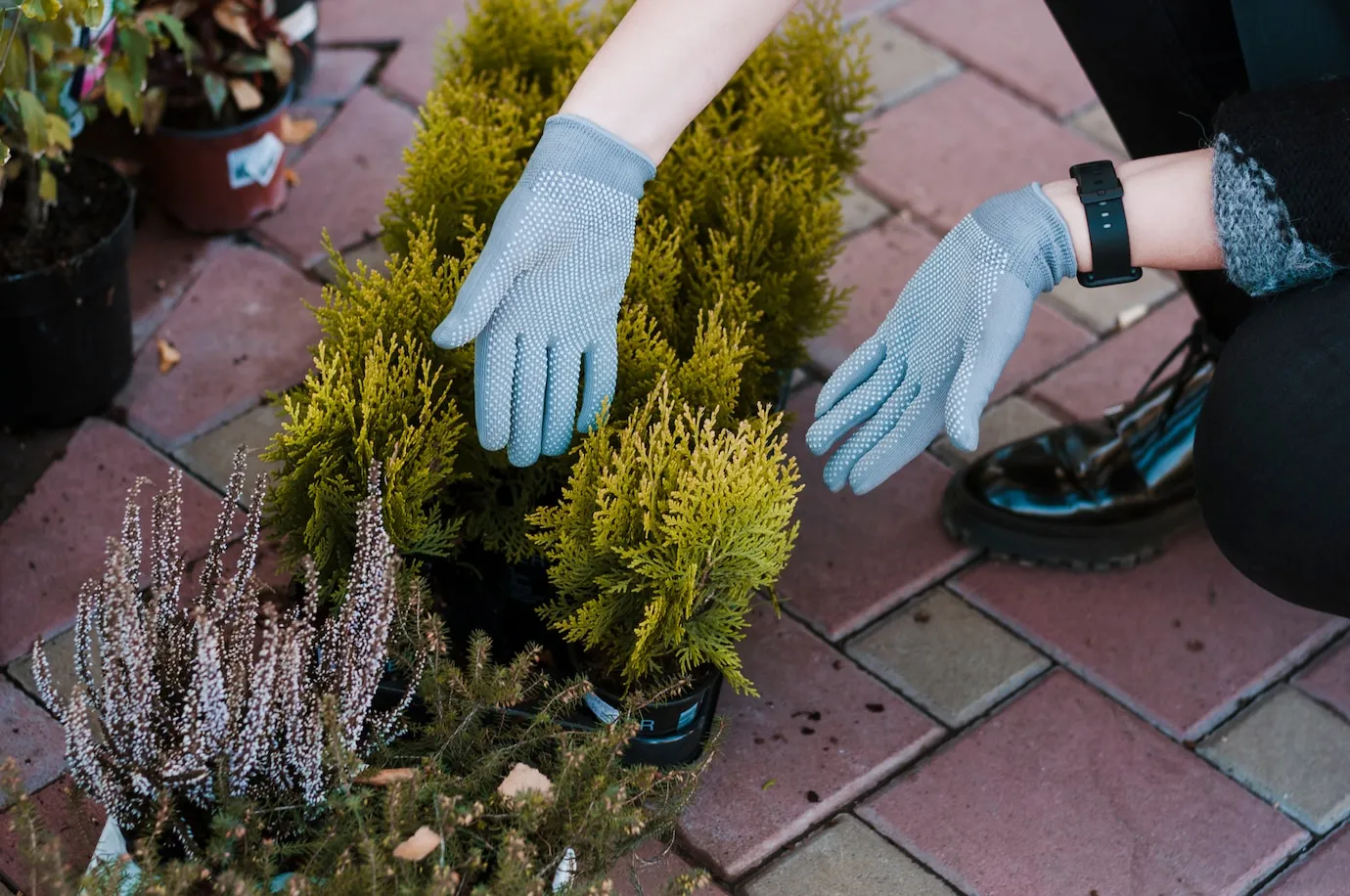Native plant landscaping is an excellent choice for homeowners in Ontario who want to create a sustainable, low-maintenance garden that supports local wildlife and the environment. Native plants are naturally adapted to the region’s climate, soil, and weather conditions, making them more resilient and easier to care for compared to non-native species. In this post, we’ll explore why native plant landscaping works so well in Ontario, highlighting its benefits for biodiversity, water conservation, and long-term garden health.
Native plant landscaping offers numerous benefits for homeowners in Ontario, including enhanced biodiversity, reduced maintenance, and improved resilience to local climate conditions. By incorporating native species, such as Purple Coneflower, Black-eyed Susan, and Wild Bergamot, you can create a vibrant and sustainable garden that supports local wildlife and requires less water and chemical inputs. These plants are well-adapted to Ontario’s climate, making them ideal for creating low-maintenance and eco-friendly landscapes.
For residents seeking professional assistance with their landscaping needs, Landscaping in Richmond Hill offers expert services tailored to enhance the beauty and functionality of outdoor spaces.
What Are Native Plants?
Native plants are species that naturally occur in a specific region without the help of human intervention. These plants have evolved to thrive in the local climate, soil types, and ecosystems. In Ontario, native plants have adapted to the cold winters and variable growing seasons, making them ideal choices for local landscapes.
Some examples of native plants in Ontario include:
- Purple Coneflower (Echinacea purpurea)
- Black-eyed Susan (Rudbeckia hirta)
- Milkweed (Asclepias Syriaca)
- Wild Bergamot (Monarda fistulosa)
- Swamp Milkweed (Asclepias incarnata)
Choosing native plants helps create a garden that is in harmony with the local environment, supporting wildlife and enhancing the beauty of your outdoor space.
Benefits of Native Plant Landscaping in Ontario
- Biodiversity Support
One of the most significant benefits of native plant landscaping is its positive impact on biodiversity. Native plants provide essential food, shelter, and breeding grounds for a wide variety of local wildlife, including pollinators like bees, butterflies, and hummingbirds. By choosing native plants, you are creating a habitat that supports the survival of local species that rely on specific plants for nectar, pollen, and shelter.
For example, milkweed is the host plant for monarch butterflies, and wild bergamot attracts a variety of pollinators, including bees and butterflies. Incorporating native species like these into your garden can help reverse the decline of pollinator populations in Ontario.
By providing a habitat for pollinators and other wildlife, you contribute to a healthier ecosystem in your own backyard. Garden design & planting experts can help you select the right mix of native plants to support biodiversity in your garden.
- Low Maintenance and Resilience
Native plants are naturally adapted to Ontario’s climate, meaning they require less water, fertilizer, and pesticide than non-native species. They are more resistant to local pests, diseases, and environmental stressors such as drought, extreme cold, and fluctuating temperatures.
In Ontario, where winters can be harsh and summers can be hot and dry, native plants are well-suited to handle these fluctuations. Unlike many ornamental plants, native species can survive with minimal intervention, making them an excellent choice for homeowners looking for a low-maintenance garden.
Additionally, native plants have deep root systems that improve soil structure and reduce erosion. This helps conserve soil moisture and nutrients, especially important during Ontario’s dry spells. If your lawn or garden requires lawn aeration & dethatching to improve soil health, native plants can thrive once proper soil conditions are established.
- Water Conservation
Water conservation is a significant concern in Ontario, especially during the summer months when rainfall is sparse. Native plants are naturally adapted to local water availability, meaning they require less water once established. Many native plants are drought-tolerant and can survive periods of dry weather without needing frequent watering.
By replacing water-intensive non-native plants with drought-resistant native species, you can create a garden that is both beautiful and water-efficient. For larger properties, consider adding landscape drainage solutions to manage stormwater runoff and ensure water is directed appropriately.
Moreover, native plants’ ability to absorb and retain moisture in the soil means you’ll need to water less, ultimately conserving valuable water resources. By integrating native plants into your landscape, you reduce the need for irrigation systems, further contributing to sustainability.
- Soil Health Improvement
Native plants help improve soil health through their deep, extensive root systems. These roots break up compacted soil and create channels that allow water, air, and nutrients to reach deeper into the ground. This leads to healthier, more fertile soil that supports not only the native plants but also other species in the ecosystem.
Additionally, native plants require less fertilization because they are adapted to the local soil conditions. Non-native plants often require synthetic fertilizers to thrive, which can lead to soil degradation and water pollution. By using native plants, you contribute to reducing the reliance on chemical fertilizers and promote long-term soil health.
For better soil management, mulching & garden bed maintenance can further enhance the soil’s moisture retention and nutrient content, ensuring your garden thrives throughout the growing season.
- Climate Adaptability
Ontario’s climate can be unpredictable, with harsh winters, hot summers, and varying precipitation levels. Native plants are inherently more adaptable to these conditions, as they’ve evolved to survive local temperature extremes and changing weather patterns.
Incorporating native plants into your landscape helps ensure that your garden will thrive despite Ontario’s sometimes unpredictable weather. Native species are better equipped to handle Ontario’s cold winters, reducing the need for extra protection or annual replanting.
If you want to further prepare your garden for Ontario’s weather, landscaping consultation services can provide expert advice on selecting plants that will perform best in your specific area, taking into account factors like soil type, sunlight, and exposure.
How to Start a Native Plant Landscape in Ontario
- Do Your Research
Start by researching native plants that are suitable for your garden’s conditions (soil type, sun exposure, moisture levels). Local gardening centers or native plant societies can offer guidance on the best plants for Ontario. - Create a Planting Plan
Consider the colors, textures, and blooming times of native plants to ensure your garden looks vibrant throughout the seasons. Group plants with similar sunlight and water needs together for better results. - Prepare the Soil
Native plants thrive in well-draining soil. Before planting, amend your soil with compost or organic material to improve its texture and nutrient content. This will help the plants establish strong root systems. - Plant and Mulch
Once you’ve selected and placed your native plants, apply mulch around them to retain moisture and suppress weeds. Water them thoroughly after planting, and then only as needed to establish their roots. - Ongoing Care
While native plants require less maintenance than non-native species, they still need some care. Remove dead plants, check for pests, and ensure your garden remains healthy by periodically adding compost and mulch.
Conclusion
Native plant landscaping is an eco-friendly, sustainable choice for homeowners in Ontario. By incorporating native plants into your landscape, you support local wildlife, reduce water and chemical use, improve soil health, and create a low-maintenance garden that thrives in Ontario’s diverse climate. Whether you’re creating a pollinator garden, improving soil quality, or simply beautifying your outdoor space, native plants provide a host of benefits that make them a perfect fit for any Ontario yard.





